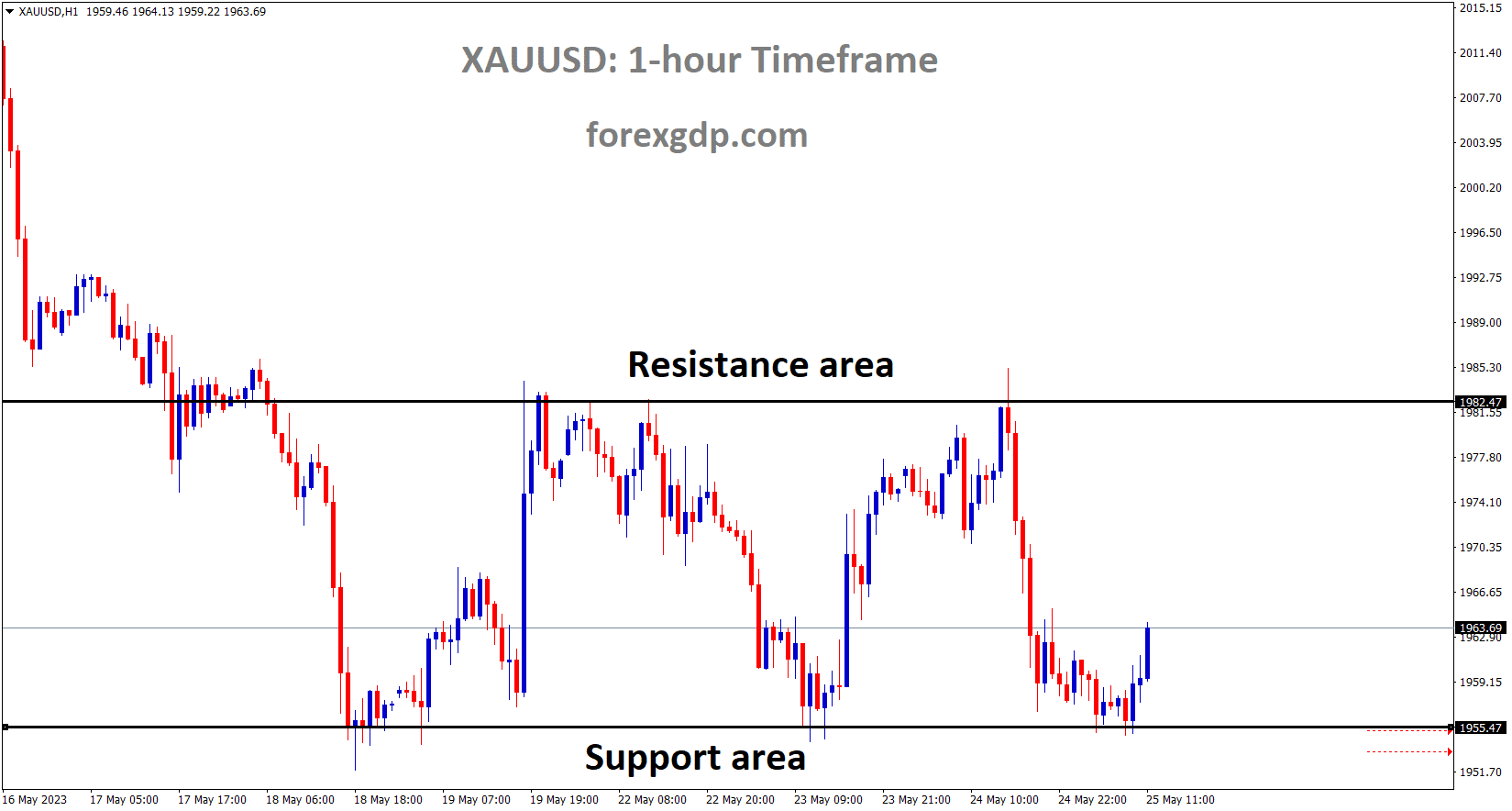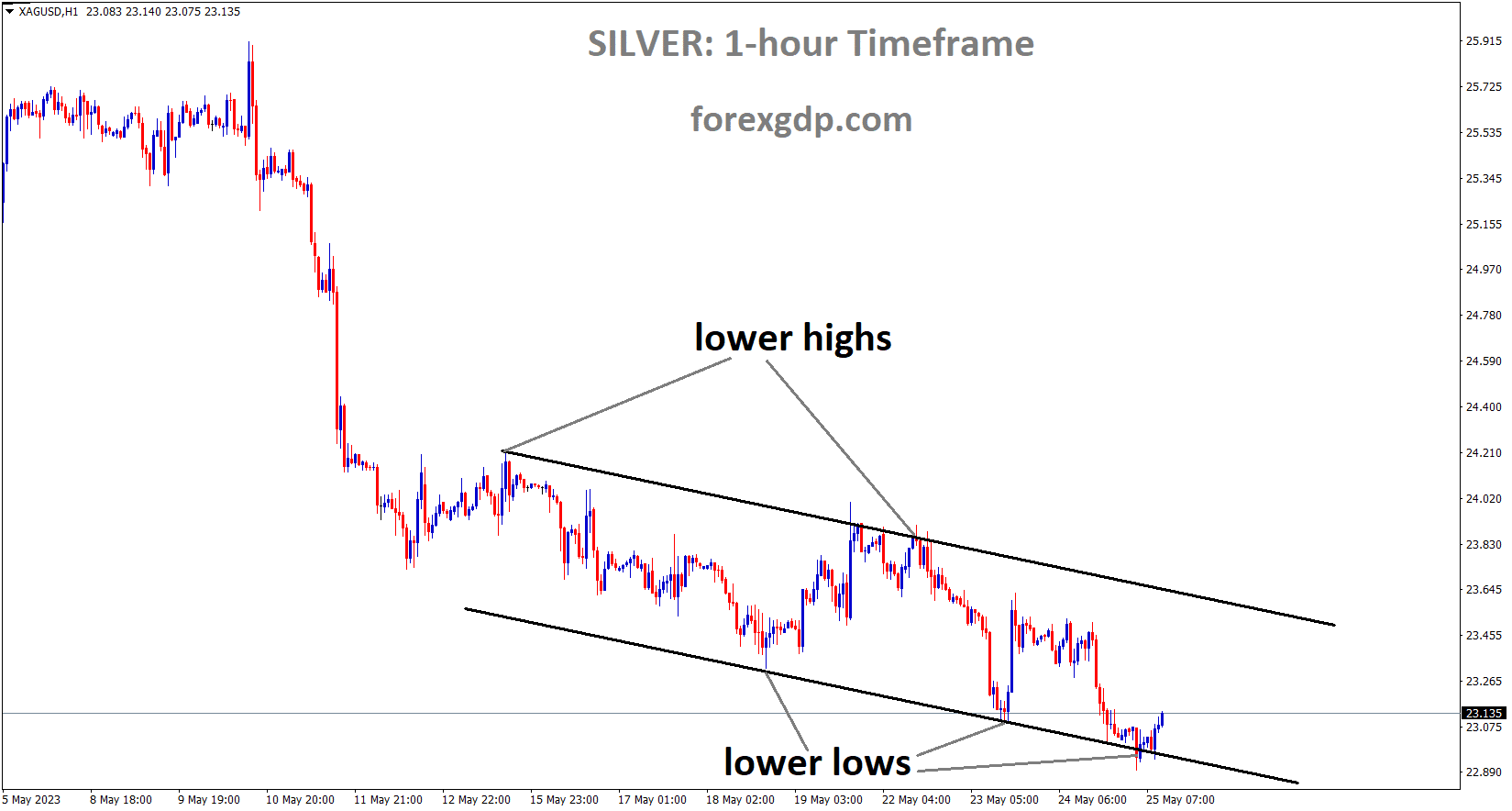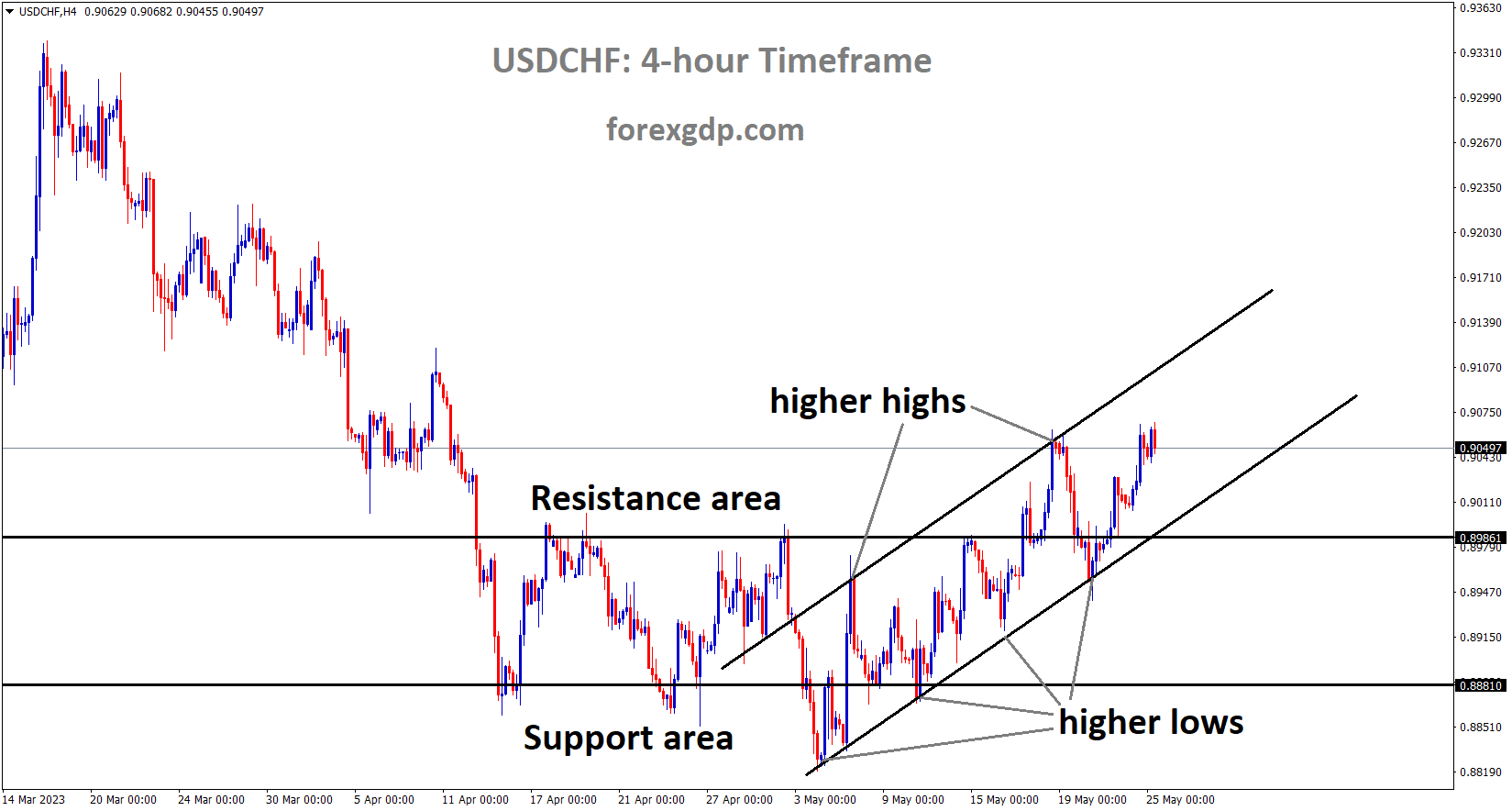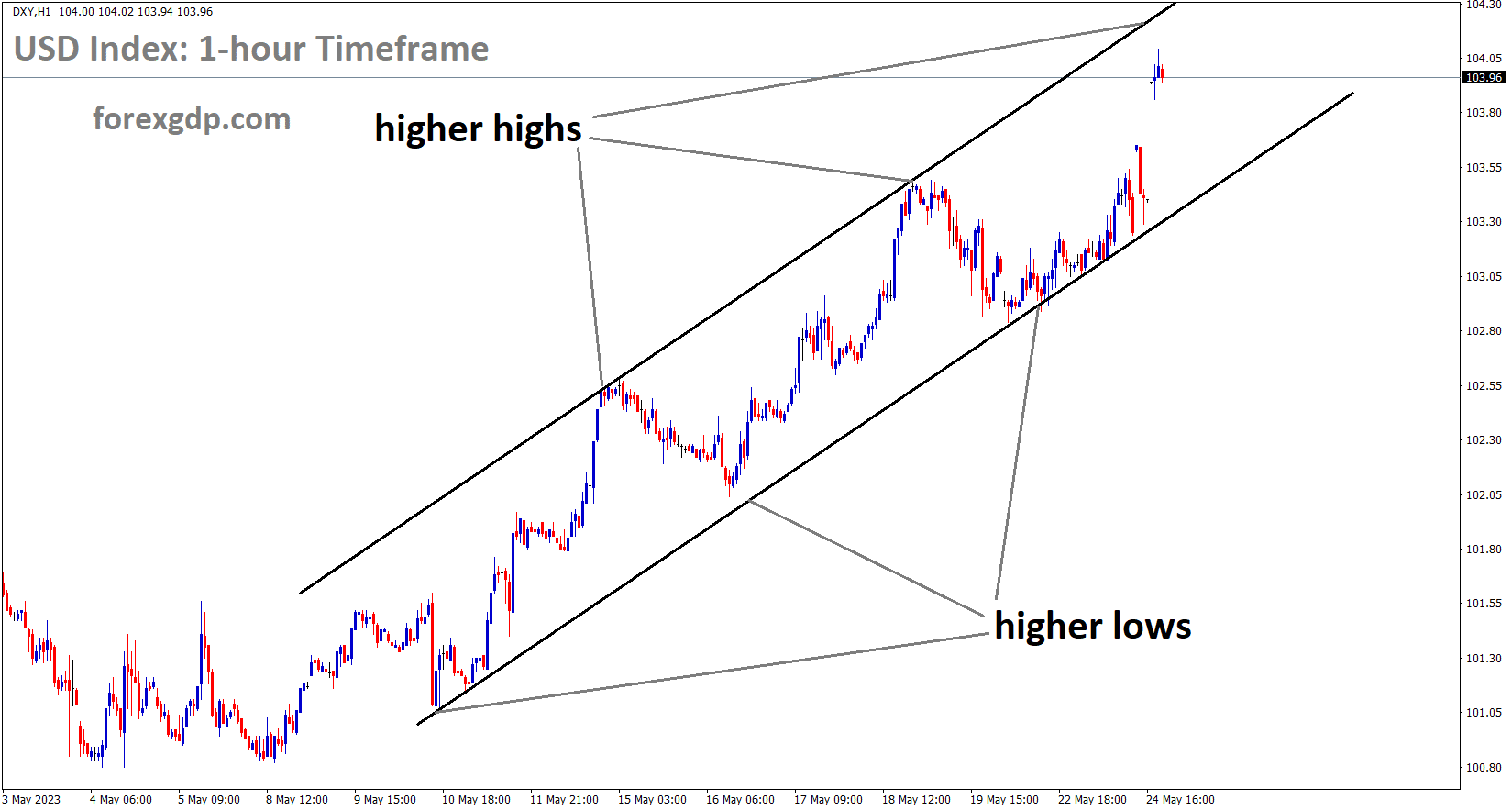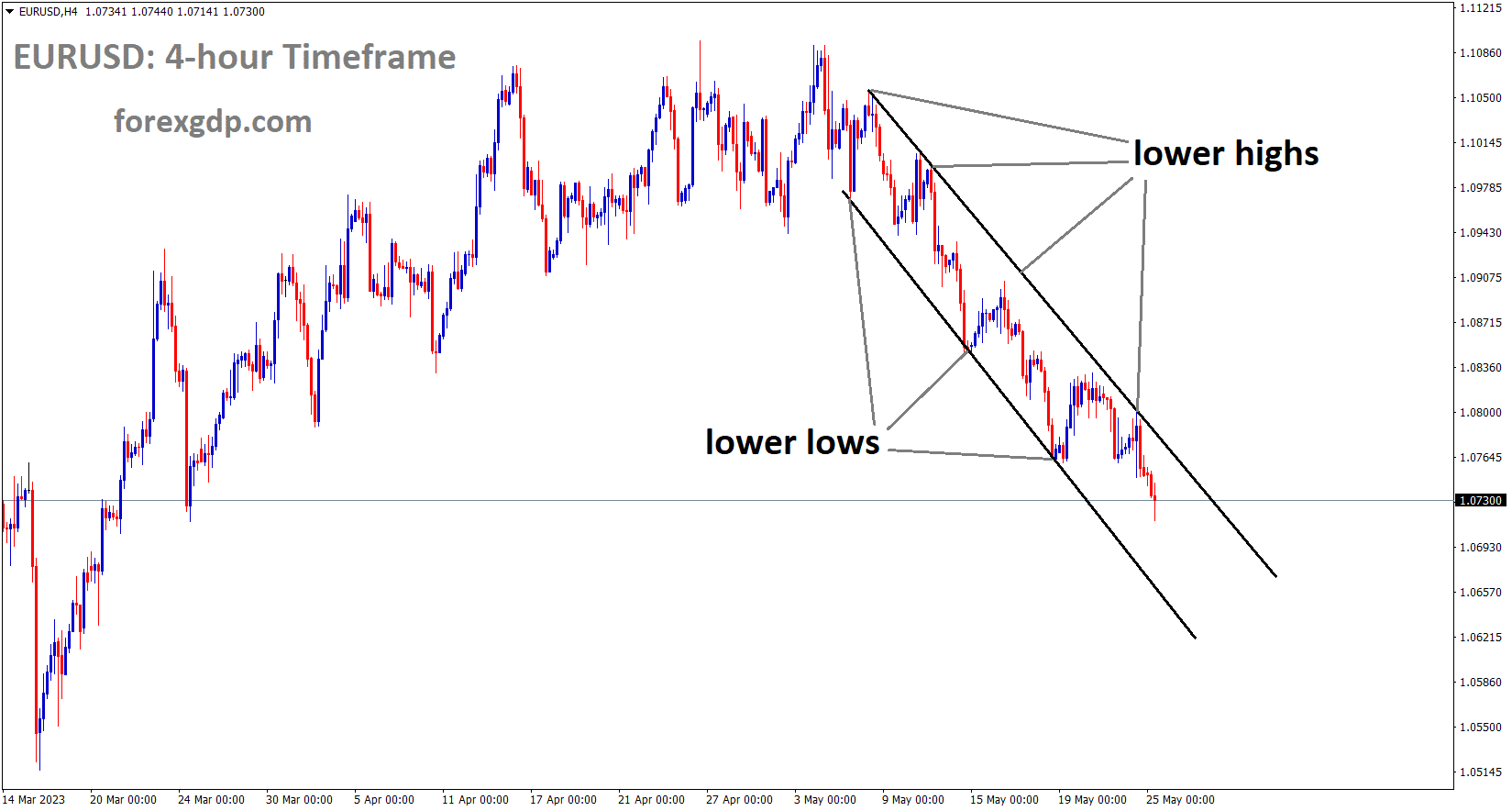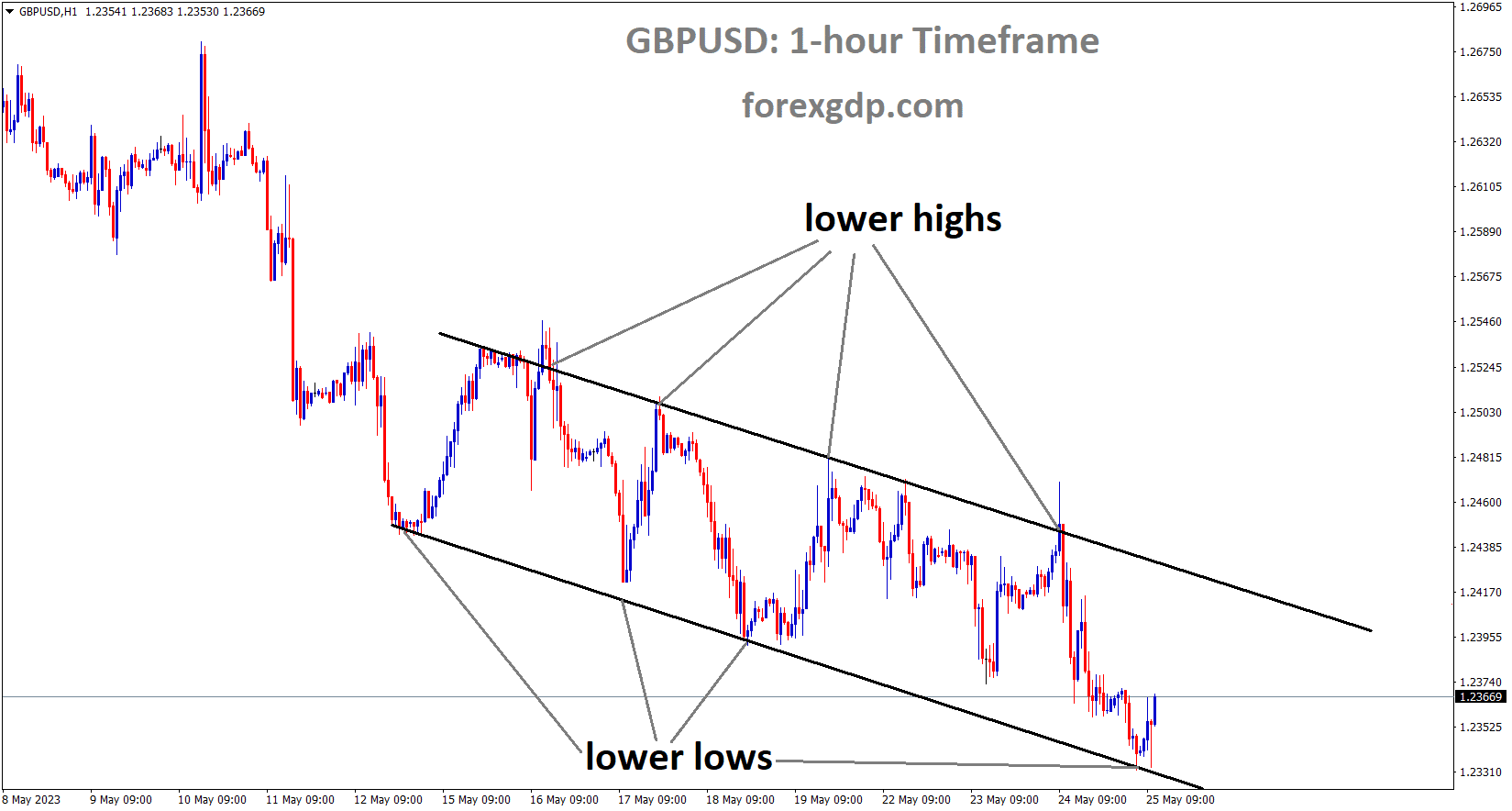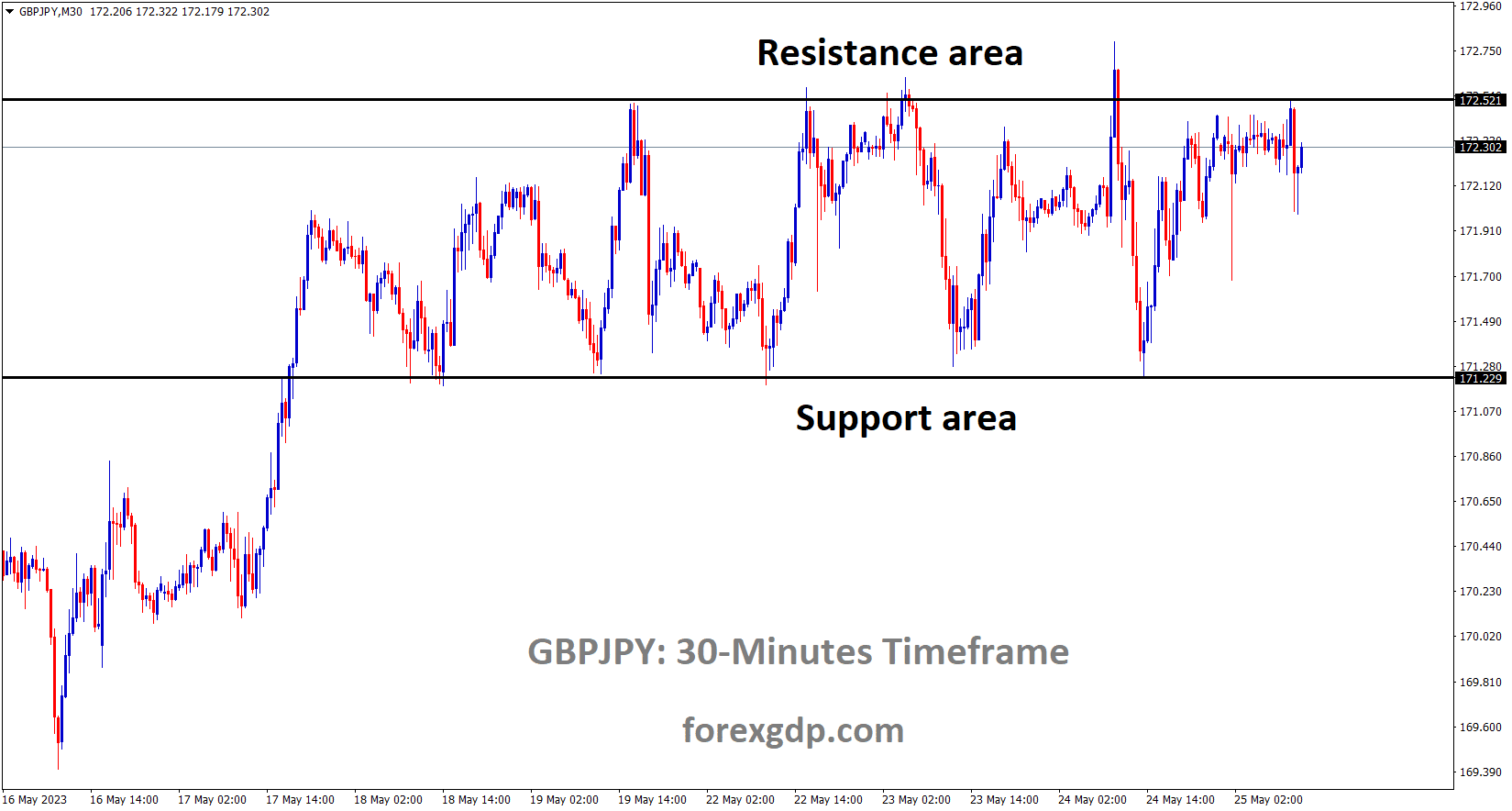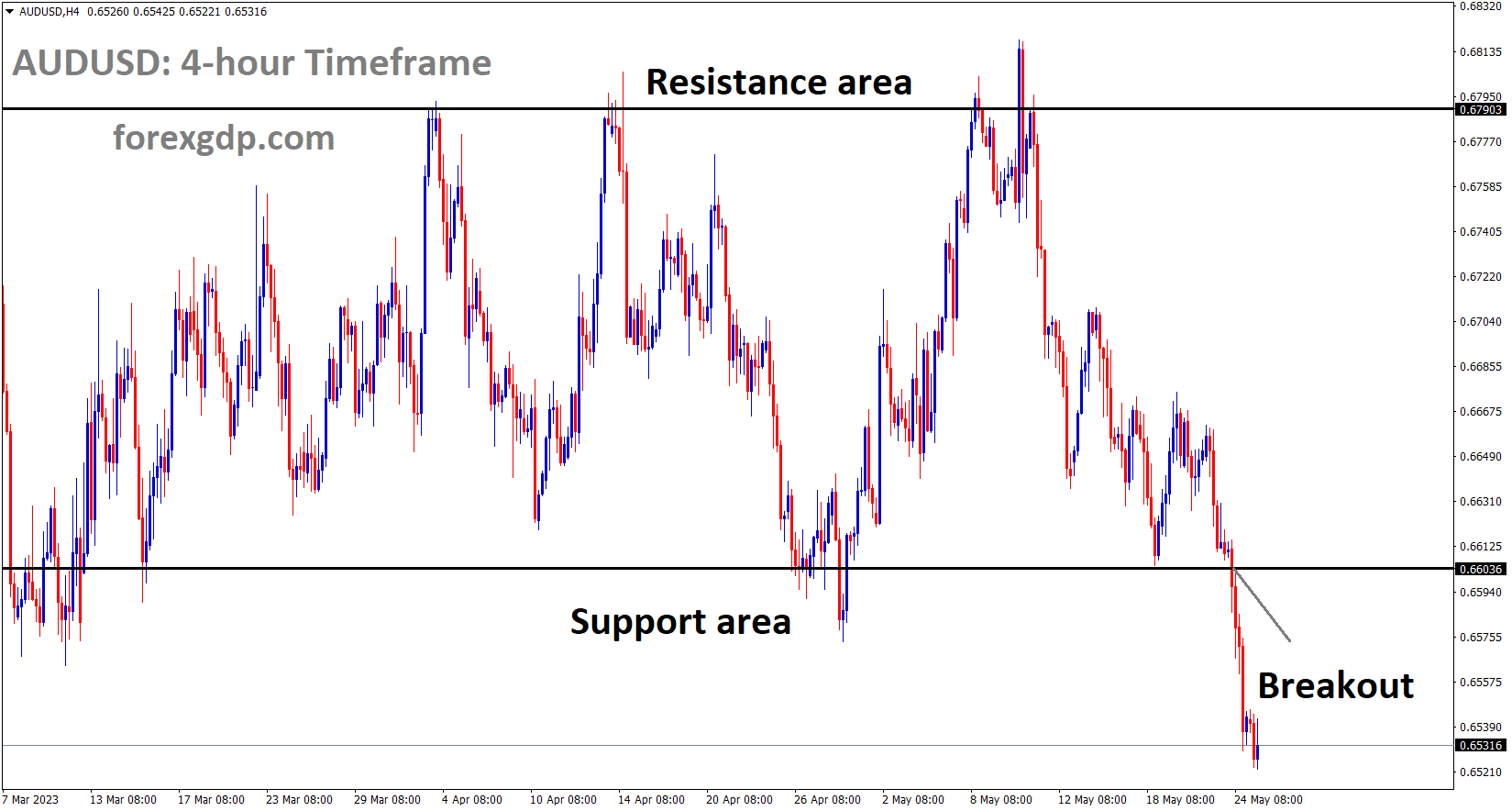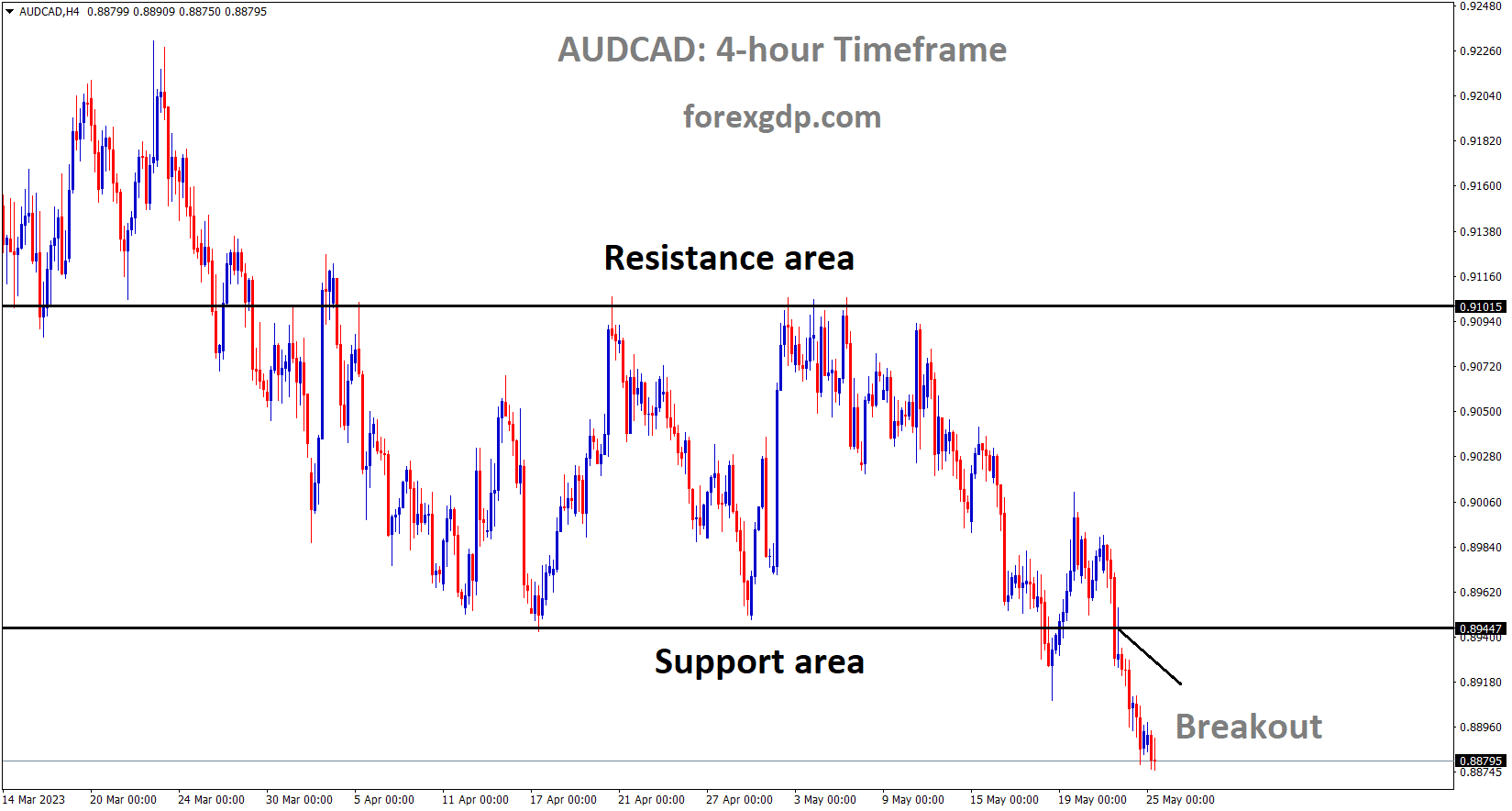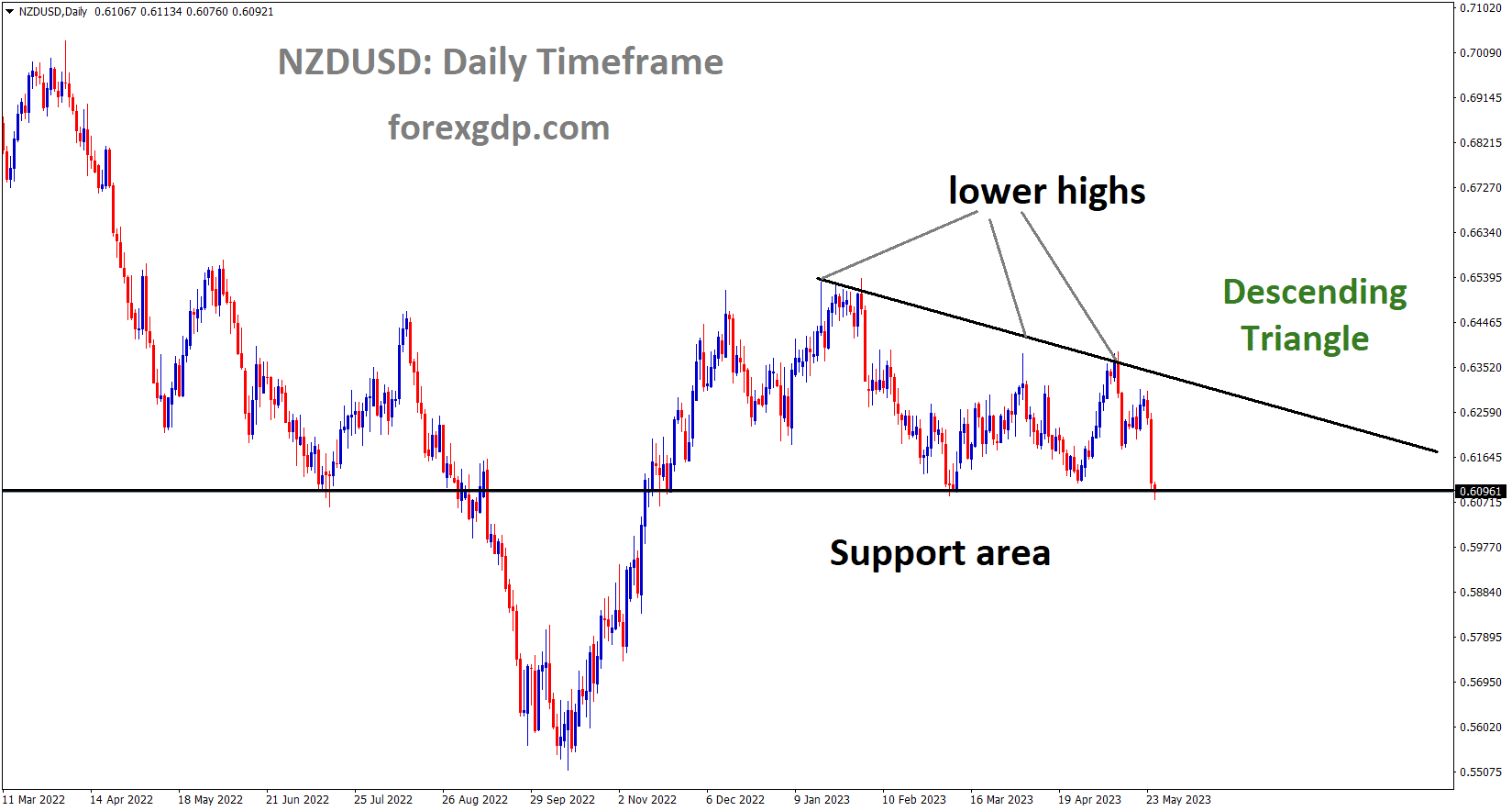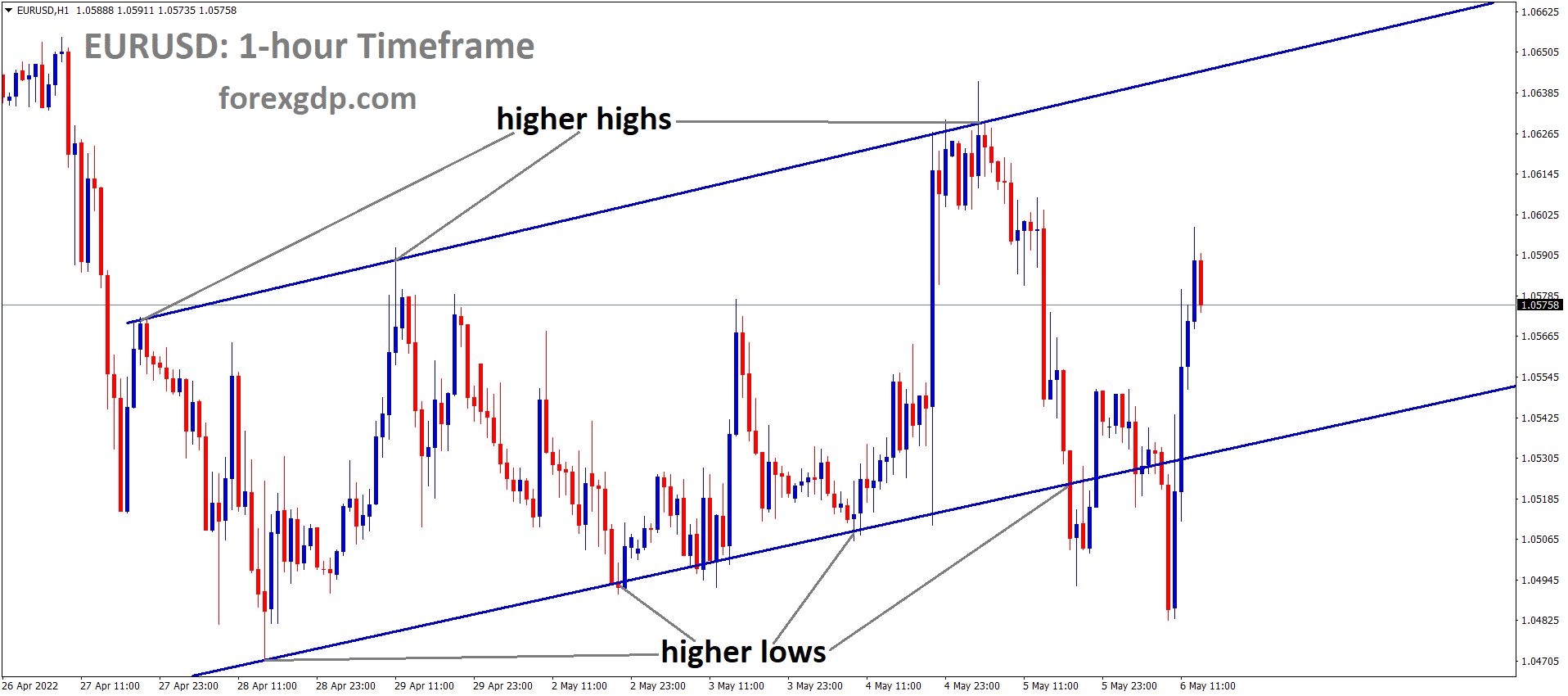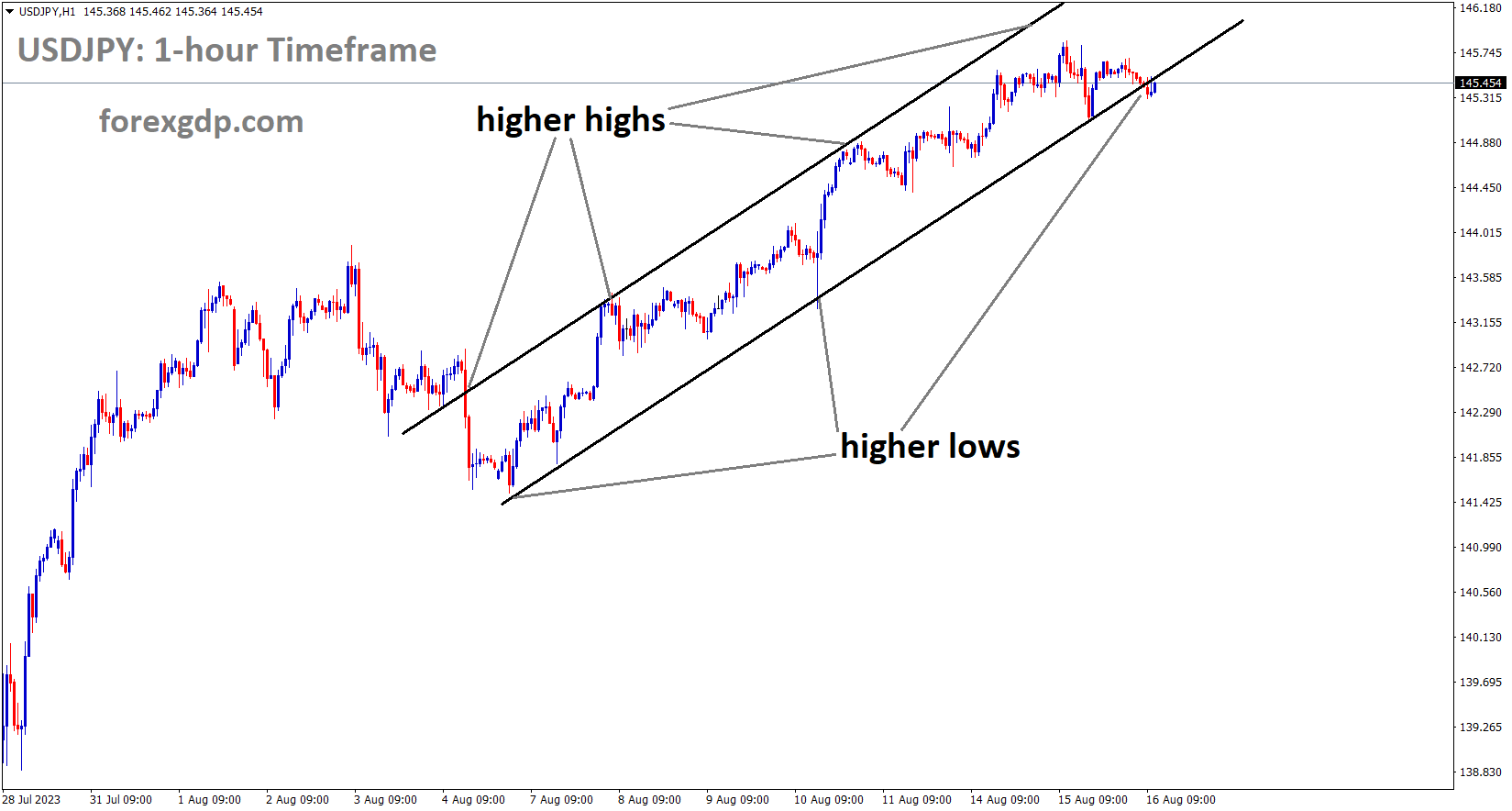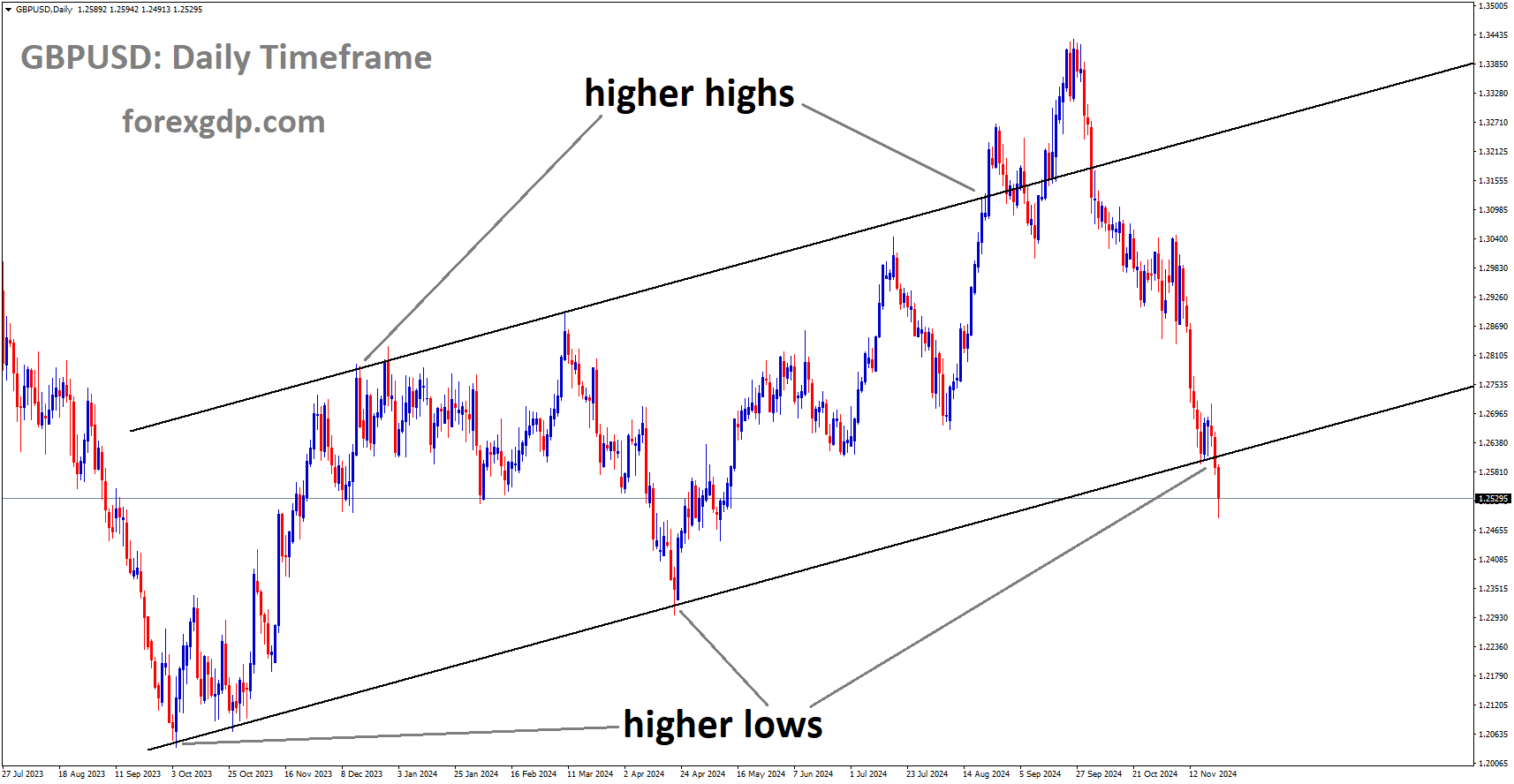GOLD Analysis
XAUUSD Gold price is moving in the Box pattern and the market has rebounded from the horizontal support area of the pattern.
Gold prices have fallen as a result of the uncertainty surrounding the US Debt Ceiling Limit meeting. US President Joe Biden stated that the US will not default, and US White House Speaker Kevin McCarthy stated that the US will not default; these statements have increased investor confidence, causing the US dollar to rise and investors to sell non-yielding assets such as gold. The outcome of the FOMC meeting minutes was dovish rather than hawkish.
Gold Price is unable to find a clear direction as bulls and bears jostle around a short-term key support line nearing $1,955 as the European session begins on Thursday. As a result, the yellow metal reflects the market’s uncertainty amid conflicting signals surrounding the US debt limit extension talks and the US Federal Reserve (Fed). The cautious mood ahead of a slew of mid-tier data from the US is also likely to prod XAUUSD traders. The inability of US policymakers to deliver a debt ceiling extension deal, combined with the looming long weekend for House Representatives, heightens US default fears, even if negotiators see progress in the most recent rounds of talks. As a result, global rating agencies such as Fitch and Moody’s became wary of the US credit rating status, while the US Treasury Department accepted their concerns. In other news, the minutes of the most recent Federal Open Market Committee meeting revealed that policymakers are divided over the US central bank’s latest 0.25% rate hike. The market is also sceptical of another such move in June. Nonetheless, Atlanta Fed President Raphael Bostic stated that we are right at the beginning of the hard part’ of taming inflation. In the same vein, Federal Reserve Governor Christopher Waller stated that he does not support halting rate hikes unless there is clear evidence that inflation is approaching the 2% target.
SILVER Analysis
XAGUSD Silver Price is moving in the Descending channel and the market has rebounded from the lower low area of the channel.
On the other hand, the market’s expectation of further easing from China, despite record-high interbank Repo turnover, contrasts with geopolitical concerns that could undermine gold price movements. While reflecting the mood, the S&P500 Futures broke a two-day downtrend by bouncing off a two-week low to 4,138 by press time, up 0.39% intraday. On the other hand, US 10-year and two-year Treasury bond yields are at their highest since mid-March, hovering around 3.75% and 4.40% as we write. Following that, the US weekly jobless claims, the Chicago Fed National Activity Index, and pending home sales will adorn the calendar, but the debt ceiling talks will be critical to monitor for clear direction.
USDCHF Analysis
USDCHF is moving in an Ascending channel and the market has rebounded from the higher low area of the channel and the Box pattern breakout in upside.
The Swiss government intended to prohibit public tobacco and smoking advertisements. Every year, 9500 people die, and a new law went into effect in mid-2026, with the initial process currently underway. In February 2022, 57% of Swiss voters support tighter tobacco restrictions for Swiss youth.
Switzerland will ban advertising for tobacco products and e-cigarettes aimed at young people, the government announced on Wednesday, putting into effect a referendum decision made last year. The cabinet announced that it would tighten already planned restrictions on advertising in places and media where young people can see it. The new laws will go into effect in mid-2026, and they will strengthen restrictions on tobacco and e-cigarette packaging and advertising that will go into effect next year. The move, which will have an impact on print media, online advertising, and festivals, is intended to reduce tobacco consumption and related deaths. According to the government, smoking is still relatively common in Switzerland, with 9,500 people dying prematurely as a result of tobacco consumption each year, making it one of the country’s most serious public health issues.
Tobacco use causes a slew of noncommunicable diseases, the cost of which is estimated to be 3 billion Swiss francs per year, according to the government. Tobacco advertising, it was added, plays a significant role in the decision to begin smoking. According to the government, 6.9% of Swiss 11 to 15-year-olds smoked cigarettes in the previous 30 days in 2022, while 5.7% of youths aged 15 to 24 used electronic cigarettes at least once a month. Tobacco or e-cigarette advertising will be prohibited in print media, shops, or events open to minors in the future. Furthermore, sponsorship of events attended by people under the age of 18 will be prohibited. Online advertising will be allowed as long as age control systems are in place. The new restrictions are the result of the referendum “Yes to the protection of children and youths from tobacco advertising,” which was approved by 57% of Swiss voters in February 2022.
USD Index Analysis
USD index is moving in an Ascending channel and the market has reached the higher high area of the channel.
The outcome of the US FOMC meeting minutes was a dovish stance; the June meeting may be expected to see a pause in rate hikes rather than rate cuts. According to the Economist, interest rates will be cut in December 2023. The US dollar remains strong as US Treasury yields rise due to concerns about the US debt ceiling limit.
The US Dollar reclaimed the lead overnight, with Treasury yields rising and stocks falling as the US debt ceiling debate dragged on towards June 1st. That is the date set by Treasury Secretary Janet Yellen as the day when the Treasury may run out of cash. The ‘big dollar’ has seen a surge in demand, with high beta currencies such as the Australian and New Zealand dollars being hit the hardest, but the rally has been broad-based across currency markets. The South Pacific currencies fell to 6-month lows, with the growth-linked Dollars vulnerable to shifts in global risk sentiment, which is weakened by the uncertainty surrounding the US debt ceiling debacle.The credit rating agency Fitch has placed the United States on negative watch as the debt ceiling deadline approaches.
While many analysts believe a solution will be found before a default occurs, the prospect of it occurring is fueling speculation for a variety of scenarios. If this occurs, uncertainty appears to be the only certainty. It should be noted that House Speaker Kevin McCarthy stated late Wednesday that “we are not going to default.” Treasury yields have risen across the yield curve, with the 1-year note now just a few basis points away from a 23-year high. The minutes of the Federal Reserve meeting released yesterday revealed that, while there was no consensus for further rate hikes, the notes indicated a temporary pause rather than the prospect of a cut. Markets are pricing in a rate cut for the December Federal Open Market Committee meeting.
EURUSD Analysis
EURUSD is moving in the Descending channel and the market has fallen from the lower high area of the channel.
ECB Governing Council member Bostjan Vasle stated that the ECB can raise interest rates to control inflation rates and achieve the 2% target. In the present, there are more links between fiscal, wage-price, and monetary policy than in the past.
Bostjan Vasle, a member of the European Central Bank’s Governing Council, told Slovenia’s Delo newspaper early Thursday that the central bank must continue raising interest rates to bring inflation down to its target. More interest rate hikes will be required. They will, however, be smaller than in the past. We are approaching a level of interest rates that is restrictive enough to return inflation to 2%. Fiscal policies, including wage policies and monetary policies, will need to be more closely linked than in the past.
German GDP data for the first quarter of 2023 fell by -0.30%, indicating that the Eurozone’s economic powerhouse has entered a slump. German annualised GDP fell to 0.50%, down from -0.10% expected. Euro weakness persists as a result of the German economy’s GDP slowdown.
According to final data published by Germany’s Destatis on Thursday, the German economy entered a technical recession in the first quarter of 2023. In the first quarter of this year, the eurozone’s economic powerhouse contracted by 0.3%. In the reported period, the preliminary figure showed no growth for Germany. The market was expecting a 0% clip. Germany’s annualised GDP shrank 0.5%, down sharply from the -0.1% recorded in the first estimate, and fell far short of the market expectation of -0.1%.
GBPUSD Analysis
GBPUSD is moving in the Descending channel and the market has rebounded from the lower low area of the channel.
The UK energy regulator, Ofgem, announced a reduction in price caps on household energy bills beginning in July for dual fuel households.
According to the regulator, wholesale energy price declines indicate a reduction in the price caps on household energy bills.
GBPJPY Analysis
GBPJPY is moving in the Box pattern and the market has reached the resistance area of the pattern.
The UK energy regulator, Ofgem, announced on Thursday that its price cap on household energy bills will be reduced from July to an annual level of GBP2,074 ($2,617.60) for a typical dual-fuel household. According to the British regulator, the price caps will be reduced to reflect a drop in wholesale energy prices.
According to Bank of Japan Governor Ueda, Japan’s economy is performing well right now, and the country will soon achieve a stable and sustainable inflation target in the coming months. We must maintain a patiently loose monetary policy for a year or months before shifting from a loose to a tightened policy.
AUDUSD Analysis
AUDUSD has broken the Box pattern in downside.
The Australian Dollar fell following China’s economic slowdown and recovered slowly from the Covid-19 impact. Commodity exports are falling, and the RBA plans to pause interest rates in June, lowering inflation and retail sales.
According to RBA Head of Domestic David Jacob, the balance sheet unwinding process began with a $20 billion purchase to sell transaction that has matured.
After a vertical fall to near 0.6530 in the early Tokyo session, the AUDUSD pair found intermediate support. The lack of recovery in the Aussie asset after reaching a support level indicates a lack of strength in the Australian Dollar, implying further decline ahead. S&P500 futures have pared some of the gains made in early Asia. The general market mood is extremely cautious, as the US debt-ceiling issues are taking longer than expected. Investors are perplexed by think tank views on the US borrowing cap. According to Fitch Ratings, the chances of the debt ceiling not being raised or suspended are greater. Meanwhile, Kristalina Georgieva, managing director of the International Monetary Fund (IMF), told Reuters on Wednesday that she was confident the US would avoid a debt default. As the US debt-ceiling debate continues, the US Dollar Index is looking to extend its two-month high after reclaiming the 104.00 resistance level.
Meanwhile, Atlanta Federal Reserve President Raphael Bostic has argued that the central bank should keep its monetary policy meeting in June data-driven. He went on to say that the best-case scenario would be no interest rate cuts until well after 2024. Going forward, the US Durable Goods Orders data from Friday will be closely watched. The economy is expected to contract by 1.0%, compared to a 3.2% expansion. A recurrence of the same could alleviate future inflationary pressures. The Australian Dollar has lost ground against the US Dollar as investors expect the Reserve Bank of Australia (RBA) to maintain its current interest rate policy at its June meeting. Meanwhile, David Jacobs, the Reserve Bank of Australia’s (RBA) head of domestic markets, stated on Wednesday that he expects the balance sheet unwinding process to go smoothly, but he is aware of the challenges involved. “Its balance sheet is starting to unwind pandemic bond purchases; around $20 billion of purchased bonds have matured,” he added.
AUDCAD Analysis
AUDCAD has broken the Box pattern in downside.
The Canadian Dollar appears to be in good shape. After rising from a low, optimism surrounding the debt ceiling talks encouraged oil prices to rise. The White House announced tonight that a bipartisan agreement is being negotiated to determine whether the debt ceiling limit will be raised or suspended.
According to pessimistic publishers, the US economy will drive to default, and US credit will be downgraded. Most American families and businesses will struggle to recover if the US default occurs.
NZDUSD Analysis
NZDUSD is moving in the Descending triangle pattern and the market has reached the horizontal support area of the pattern.
RBNZ Governor Orr stated that rate hikes are extremely high and that a Neutral stance should be considered before this rate hike. More rate hikes kept inflation under control, as did government and domestic spending. However, businesses are more Because the upcoming meeting was neutral, the New Zealand Dollar fell sharply against the US Dollar last day.
In the Tokyo session, the NZDUSD pair fell sharply below the round-level support of 0.6100. After Reserve Bank of New Zealand Governor Adrian Orr commented on the risks of raising interest rates above what was previously considered neutral, the Kiwi asset has come under intense selling pressure. S&P500 futures have pared some of the gains made in early Asia. The overall market mood is cautious because the US economy is rapidly approaching default. US Treasury Secretary Janet Yellen has repeatedly warned the White House that if the borrowing limit remains unchanged, the country will run out of funds by June 1.The US Dollar Index has reached a new 10-week high of 103.99, owing to a delay in the resolution of US debt-ceiling issues. US President Joe Biden and other congressional leaders are refusing to accept Republican partisan terms, which include eliminating an additional tax on the wealthy and increasing spending in the budget.
Meanwhile, the Federal Reserve’s lack of certainty about raising interest rates in June has had no effect on the USD Index. Fed policymakers favour a pause in rate hikes in June, citing tight credit conditions at US regional banks as a drag on inflationary pressures. The RBNZ raised its Official Cash Rate (OCR) by 25 basis points (bps) to 5.50% on Wednesday. Orr believes the RBNZ has gone beyond what was previously considered neutral. He went on to say that there was a chance the central bank would have to raise rates due to stubborn inflation expectations and continued government spending. If the RBNZ believes it has moved above its previous peak consideration, there is very little room for further rate hikes.
Don’t trade all the time, trade forex only at the confirmed trade setups.
Get Live Free Signals now: forexgdp.com/forex-signals/

